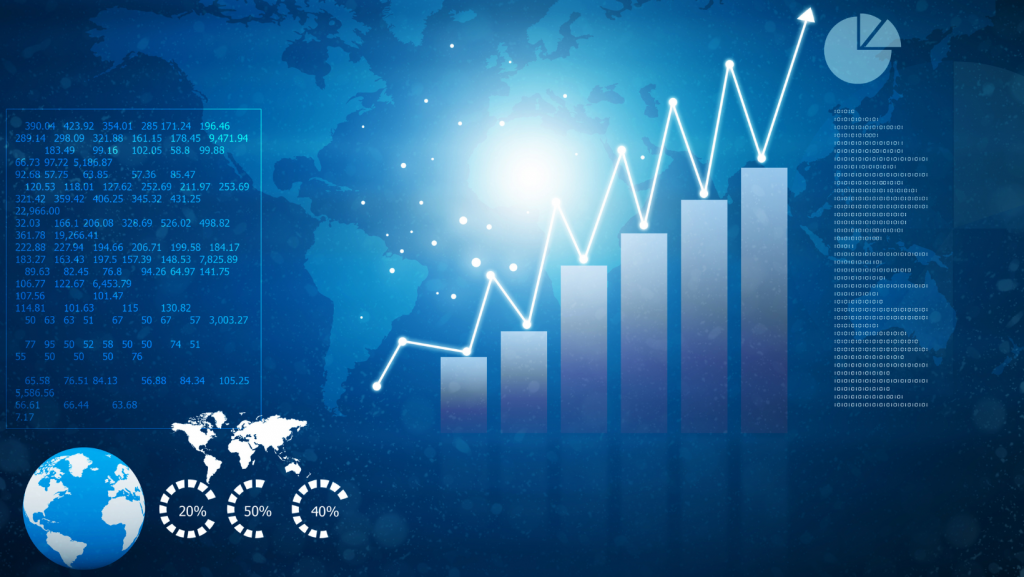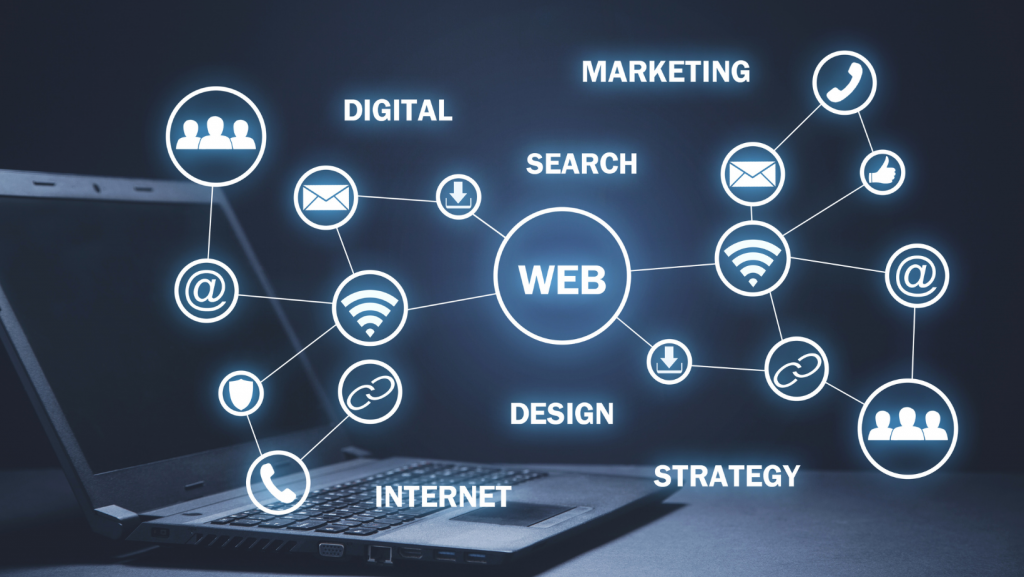
150 Growth Marketing Statistics That’ll Give You An Unfair Advantage
By: Growth Kolony
With great data comes great knowledge and with great knowledge comes great power.
So today we highlight 150 growth marketing statistics that’ll empower business owners and professional marketers with the knowledge that’ll help accelerate online growth today.
Let’s get right into it!
Why are growth marketing statistics important?
Growth marketing statistics help you stay competitive
- With powerful industry statistics and knowing your competitor’s statistics, your business will be able to size up the competition. You’ll know where the marketing industry is heading which will help you jump through future challenges and stay ahead of the competition that do not follow growth marketing statistics.
Growth marketing statistics keep you on top of trends
- This is vital if you want to reveal patterns and trends happening in the online marketing world. With proven data-driven strategies, you’ll find assistance in identifying emerging platforms and strategies.
Growth marketing statistics make room for plenty of other strategies
- When you are dealing with this particular type of marketing, you build and improve on what is proven to work. There’s no guessing when the proven data is there. You then can spend time focusing on other tasks, like taking your site through more audits and experiments. Because after all, the efforts you put into growth marketing are fruitless if your website fails to support them.
Important growth marketing statistics
Below you’ll find the latest growth marketing statistics that highlight the industry market.
How big is the growth marketing industry?
1. Currently, US digital and advertising marketing is estimated at $460 billion dollars.
2. In Canada, businesses are expected to hit an estimated $12.3 billion dollars.
3. The global market for the growth marketing industry was estimated at $350 billion in the year 2020 and is supposed to reach $786 billion by the year 2026.
What’s the growth rate of the growth marketing industry?
4. The annual growth rate of growth marketing between the years 2020-2026 is projected to be 9 percent.
5. In 2022 alone, 63 percent of businesses have already increased funding for their growth marketing strategies.
6. The budget rate in growth marketing spending has been noticed to rise 14 percent just within the past year.
7. Digital display is expected to grow to about 15.5 percent CAGR and search marketing is expected to continue to grow at 12.2 percent. Search marketing accounts for 40.9 percent of the marketing and global growth advertising market.
What is the success rate of growth marketing?
There is not one single answer that can explain this, however, here are a few pointers that can guide you in the right direction:
8. The highest reported ROI rate for paid ad channels are Google Ads and Facebook Ads.
9. PPC results in a 200 percent ROI rate, meaning on average PPC ads return $2 dollars for every $1 dollar spent.
10. 50 percent of businesses claim that organic search is what brings them the most ROI.
11. Email marketing returns $36 dollars for each dollar that is spent.
12. Small businesses say that email marketing is the one marketing channel that brings them the highest return when it comes to investment.
13. According to marketers, SEO and content marketing provide the best ROI.
How much of the marketing industry is digital?
14. About 72 percent of the overall marketing budget goes to digital channels.
15. 55 percent of all marketing is digital. Offline marketing in the year 2021 was $196 billion dollars and online marketing cost $436 billion dollars.
Is growth marketing in demand in 2022?
16. The demand for a growth marketing job is expected to increase by about 10 percent by the year 2026 – that’s above average for all careers.
More Interesting Growth Marketing Stats
17. An average local business invests about 5-10 percent of its revenue in growth marketing, and we’ve seen larger businesses invest up to 14 percent of their revenue in growth marketing.
18. Customers spend 50 percent more on businesses that respond to reviews regularly.
19. 93 percent of people read online reviews before making a purchase.
20. 78 percent of consumers trust peer recommendations while only 14 percent trust advertisers. Prospects spend 5 times longer on a certain site after reading negative online reviews about a business.
21. Google is currently holding 91 percent of the complete worldwide search engine market share.
22. 45 percent of shoppers buy online and then pick up in-store.
23. Three-quarters of businesses report how growth marketing campaigns directly influence their overall revenue.
24. 52 percent of businesses are using marketing attribution reporting.
25. 62 percent of marketers use CRM software for reports.
Online Marketing Statistics For 2022
If you have a strategy that needs framing, look at these data points below.
The following online marketing statistics can help you understand how much you need to spend and which channels.
How effective is online advertising?
26. Digital ads increase brand awareness by 80 percent.
27. Consumers have a 155 percent more chance of looking into your website and brand-specific terms after they have been exposed to display ads.
28. Customers are 70 percent more likely to purchase from a retargeting ad.
29. When a potential customer searches after initially seeing an ad, the likelihood that they’ll buy goes up to 59 percent.
30. A user’s search activity increases by 155 percent after being served a display ad.
31. After seeing a display ad, 27 percent of customers search for the business.
32. PPC can generate double the number of website visitors that SEO brings in. The more you spend the more traffic you can expect.
33. 86 percent of people would pay more for services from a company with higher ratings and reviews.
How big is online advertising?
34. The total ad search funds spent in the year 2021 was $144 billion dollars.
35. On a global level, the digital ad spend for the year 2022 currently is $441 billion dollars, and it is estimated to increase in 2023 to $485 billion dollars.
How much advertising is online?
36. Out of the total advertising expenditures in the year 2021, 4 percent is accounted for digital advertising.
37. 50 percent of advertising in 2020 was conducted online – offline advertising spend was $196 billion dollars and online advertising spend was $378 billion dollars.
38. The annual growth of digital media is higher than offline media.
What is the percentage of online advertising on social media?
39. Out of all digital spending in 2022, social media accounted for 33 percent.
40. The annual spending on social media in the year 2022 currently is $134 billion dollars. A 17 percent YoY growth increase.
41. Paid social traffic makes up for 5 percent of overall website traffic and 15 percent is paid search traffic.
42. 4 percent of digital marketers want to increase their paid social spending in the next year.
Is online growth advertising popular?
43. 65 percent of mid-sized and large businesses have a PPC campaign.
44. 45 percent of all businesses have a paid search strategy set in place, and they use display ads too.
45. 96 percent of revenue in Google comes from Google Ads.
Even More Growth Marketing Statistics
Go through the following PPC statistics before investing your money in paid advertising.
46. 18 percent is the average click-through rate across all of the industries for Google Ads.
47. 8.82 percent is the average conversion rate in all industries, ranging from 3.25 percent to 19.19 percent.
48. $41.40 dollars is the average cost per lead across all industries, ranging from $14.88 to $73.70.
49. $3.53 dollars is the average cost per click in all industries.
50. Digital ad fraud cost advertisers $22.4 billion globally.
51. Only 20 percent of marketers use A/B tests to improve conversion rates.
52. 70-80 percent of people completely ignore digital paid ads.
SEO Statistics For 2022
If you want to take a look at the bigger picture and check whether your business is a good fit for SEO marketing, here are some SEO growth marketing trends and statistics that you might find useful.
How much is the SEO industry worth?
53. Currently, the SEO industry is worth about $80 billion dollars. In the year 2019, this industry was worth half at about $43 billion dollars, and it is predicted to go up to $86 billion dollars in the year 2023.
How much traffic does SEO generate?
54. 53 percent of website traffic derives from organic searches.
55. Businesses that commit to blogs pull in 55 percent more traffic to the website when compared to sites that do not blog.
Is SEO relevant today?
56. 61 percent of marketers report that website traffic generation is their number one priority, so yes.
Does SEO increase the ROI?
57. SEO leads have a 15 percent closing rate.
58. 85 percent of retailers report that SEO and paid search are most effective for getting new customers.
Do big companies spend money on SEO? And how much?
59. Depending on their strategy, big companies commit between $10k-$20k dollars every month to SEO.
60. Small to medium businesses spend about $5k-$10k dollars every month on SEO.
61. Small businesses spend about $1k-$5k dollars every month on SEO.
How many people go to the second page on Google?
62. Between 75-93 percent of users never look past page 1 Google. This means every time a business fails to rank for keywords on any given search query, they lose 75 percent to 93 percent of daily impressions.
What defines a good organic search performance?
63. When it comes to Google organic search, the top-ranking site has an average CTR of 31 percent.
64. The industry standard for organic CTR is between 3-5 percent.
More Growth Marketing Statistics For SEO
If you feel unsure whether you should spend more money on SEO, check out the following SEO statistics below.
65. 89 percent of customers start their customer journey with a search engine.
66. 46 percent of all Google searches are search queries for local services and local products
67. 29 words is the average voice search query. If you want to dominate voice search and perform well, you’ll have to be clear and concise with your brand name with power words.
68. 28 percent of local searches result in a purchase within 24 hours.
67. When you are ranking a website, there are over 200 search engine ranking factors from the algorithm that you need to consider.
68. 88 percent of people who conduct a local search on their smartphone visit a related store within a week.
69. SEO content is important for growing your business. Brands that blog have 434 percent more indexed pages than brands that don’t blog.
70. 76 percent of people who search on their smartphones for something “nearby” visit a business within a day.
71. The most heavily used SEO tool is Google Analytics.
Growth Marketing Statistics For Social Media For 2022
These are the type of statistics you do not want to miss out on because marketing in social media is growing by the minute.
How large is the social media market?
72. The global social media market is estimated to be worth $223.11 billion.
How much of marketing is done on social media?
73. On average, businesses focus about 15 percent of their marketing budget on social media.
Should I advertise on social media?
74. Yes. 91 percent of businesses use social media for their marketing.
Is the social media industry competitive?
75. At the moment, there are 55 million companies on LinkedIn.
76. 93 percent of all businesses are found on Facebook and 86 percent of them take advantage of Facebook advertising.
77. There are 200 million businesses on Instagram and 30 million on Snapchat.
What is the fastest-growing platform on social media?
78. TikTok is one of the fastest-growing social media platforms in 2022.
79. 40 percent of overall businesses have joined TikTok in the last year and made it a part of their social media strategy.
80. TikTok reached 1 billion active users in just five years while it took Facebook eight with 100 million of those users based in the US.
What is the most popular social media network?
81. The most popular social media platform for the year 2022 is Facebook, although the information may vary depending on what your business is specifically searching for.
According to Statista’s data here are the following most popular social media rankings:
1. Facebook
2. YouTube
3. WhatsApp
4. Instagram
5. Facebook Messenger
6. TikTok
7. QQ (Chinese messaging software)
8. Douyin (China TikTok)
9. Telegram
10. Sina Weibo (Chinese microblogging site)
11. Snapchat
12. Kuaishou
13. Pinterest
14. Reddit
15. Twitter
16. Quora
More Social Media Marketing Statistics
82. An average adult spends about two hours a day on social media.
83. Almost all Instagram users follow at least one business.
84. 91 percent of consumers have access to a social media device.
85. Nearly half of consumers rely on recommendations from influencers. Make sure to research this thoroughly and see how you can best approach influencer marketing.
86. Less than 5 percent of businesses on Facebook use video ads, so if you are looking for a way to stand out, here is it!
87. 80 percent of businesses use Twitter ads to build their following and sell products.
88. 265 million users on Snapchat open the application about 30 times on average daily. They are more inclined to make impulse purchases and are more likely to buy a product or a service from their mobile device.
89. The average swipe-up rate on Snapchat is about 50 percent and the cost per swipe is between $0.30-$1 dollar.
90. The most trusted social media platform is LinkedIn.
91. 80 percent of B2B businesses use LinkedIn advertising and almost 96 percent of them use LinkedIn for organic social media marketing.
92. 30 percent of the business engagement on LinkedIn comes from their employees.
93. If you are interested in audience targeting, LinkedIn Ads is the best platform for it! Marketers can choose from over 200 targeting characteristics.
94. TikTok is the best social platform if you are looking to have a high engagement rate per post.
95. More than 70 percent of the users on TikTok find the ads inspiring and even enjoyable!
96. 25 percent of TikTok users have either purchased or researched a product or a service once they have seen it on the platform.
97. 95 percent of the users on Pinterest have the app either to make a purchase or plan a purchase.
98. 52 percent of Pinterest users report seeing something first on the platform and purchasing it later on.
99. 64 percent of users that watch branded videos on social media end up making a purchase.
Email Marketing Statistics For 2022
If you are interested in knowing how effective email marketing can be, take a look at the statistics below.
How much is the email marketing industry worth?
100. Currently, the email marketing industry is worth $9.62 billion dollars, but it is expected to grow up to $17.9 billion dollars by the year 2027.
Is the email marketing industry a large one?
101. As the numbers and projections are coming in, the email marketing industry is expected to grow to 48 billion users by the year 2024.
What is the success rate in email marketing?
102. 80 percent is the average open rate across all industries and the average click-through rate is 2.78 percent. Small businesses have confirmed that the highest return on investment they have had is through their email marketing strategy.
What is the average ROI for email marketing?
103. The average ROI for email marketing is $36 dollars for every dollar spent.
What percentage of emails are from marketers?
104. It is widely known that marketing emails are the most prevalent ones in our inboxes. There is not a piece of specific information and number that is considered a confirmation, but since 2 billion emails are being sent each day, people receive about 120 marketing emails on average each day.
Is email marketing working in 2022?
105. Email marketing is the second most popular marketing channel, just behind social media. There is a 2 percent difference, so yes, it is a strategy that still works.
Is email marketing a growing tactic?
106. Since it is estimated for the email marketing industry to double within the next three years, this is considered to become one of the most popular strategies for both marketers and users.
107. Email marketing is constantly growing. The global email marketing industry was worth $7.5 billion dollars in the year 2020 and it is estimated to reach $17.9 billion dollars by the year 2027.
108. In the year 2020, 78 percent of marketers claimed that email marketing is important for a business to succeed, in comparison to 71 percent in the year 2019.
Even More Growth Marketing Statistics For Email Marketing
109. About 64 percent of small businesses claim they use email marketing strategies to reach their audience.
110. Every fifth email campaign is not mobile device friendly.
111. About 80 percent of all marketers claim that they would rather give up social media marketing than email marketing.
112. Email marketing is a low-cost way of promoting your business and 64 percent of all small businesses take advantage of it.
113. A third of all people open up an email just because they find the subject line interesting.
114. 47 percent of people decide to open an email solely based on the subject line.
Website Statistics For 2022
If you want to improve your website performance and visibility, these are the statistics you want to be looking at.
Why is conversion rate optimization important?
115. It takes people less than a second to form an opinion about a website.
116. If the layout of a website is not attractive, about 38 percent of people will leave the site.
117. Three-quarters of customers judge a company’s competence and credibility based on the design of its website.
118. Websites that look good and have a high-level user experience have a 400 percent higher conversion rate.
What’s the industry standard for website page speed?
119. Half of the users expect the loading time of a website to be no more than two seconds.
What percentage of companies own a website?
120. About 72 percent of businesses own a website.
Even More Growth Marketing Statistics For Website Design
121. About 60 percent of people said they would not recommend a business if it did not have a good website.
122. 40 percent of people will leave a website if it is not functioning properly.
123. 70 percent of small businesses do not have a call-to-action on their website.
124. 90 percent of people will go to your competitor and purchase if your website is not working well.
125. Businesses that invest in user experience get an ROI of $100 dollars for every $1 dollar spent.
126. 44 percent of users share their negative experiences with bad websites.
127. Only 28 percent of the text on the homepage is read by users.
128. 73 percent of businesses invest in better design to attract potential customers.
129. 90 percent of the website pages are not generating organic traffic.
130. More than half of the website traffic on a global level comes from mobile devices.
131. Bounce rates increase by 50 percent when load time is longer than 2 seconds.
132. 85 percent of people abandon a site (even mid-purchase) if they realize that they are on an unsecured website.
133. 43 percent of all small businesses that own a website are planning on improving their presence and performance this year.
134. 60 percent of marketing professionals don’t know or don’t understand their Core Website Vitals.
135. Video marketing is the most popular media tactic used by content marketers.
136. Businesses that use video marketing grow 50 percent faster than businesses that don’t.
137. 49 percent report that they grow revenue faster when they use video content.
138. 73 percent of customers are willing to spend more with a business if it had complete transparency.
139. Prospects are 35 times more likely to read a mobile message than an email.
140. Only 17 percent of professional marketers use landing page A/B tests to improve conversion rates.
And More Bonus Growth Marketing Statistics…
141. Customers are 4 times more loyal to environment-friendly brands.
142. 70 percent of marketers are actively investing in content marketing.
143. 87 percent of professional video marketers report that video has increased traffic for their website.
144. LinkedIn live streams have more than doubled since 2020 increasing by 158 percent.
145. 53 percent of professional marketers report webinars are the top-of-the-funnel format that generates the most high-quality leads.
146. The average cost-per-click in marketing is $3.33 and the most expensive marketing industry keyword cost-per-click is $165.
147. 80 percent of consumers report that they only download apps from brands they know and trust, while 72 percent are concerned apps are tracking their behaviour and movement.
148. 78 percent of salespeople who leverage the power of social selling outsell their peers who are not.
149. 80 percent of customers prefer watching videos to reading help articles.
150. 61 percent of professional marketers believe search engine optimization is the key to online success.
If you have any questions about the growth marketing statistics above or need help with growth marketing for your business, feel free to call us at 1-888-593-4159 or DM us in near real-time on Facebook, Twitter, Instagram, TikTok, LinkedIn.











